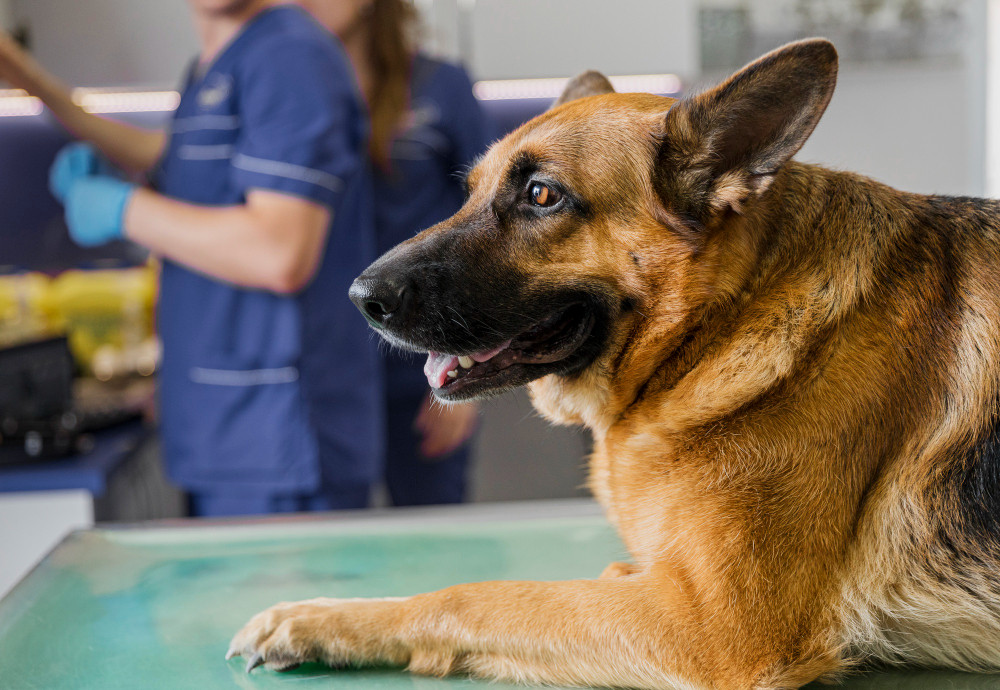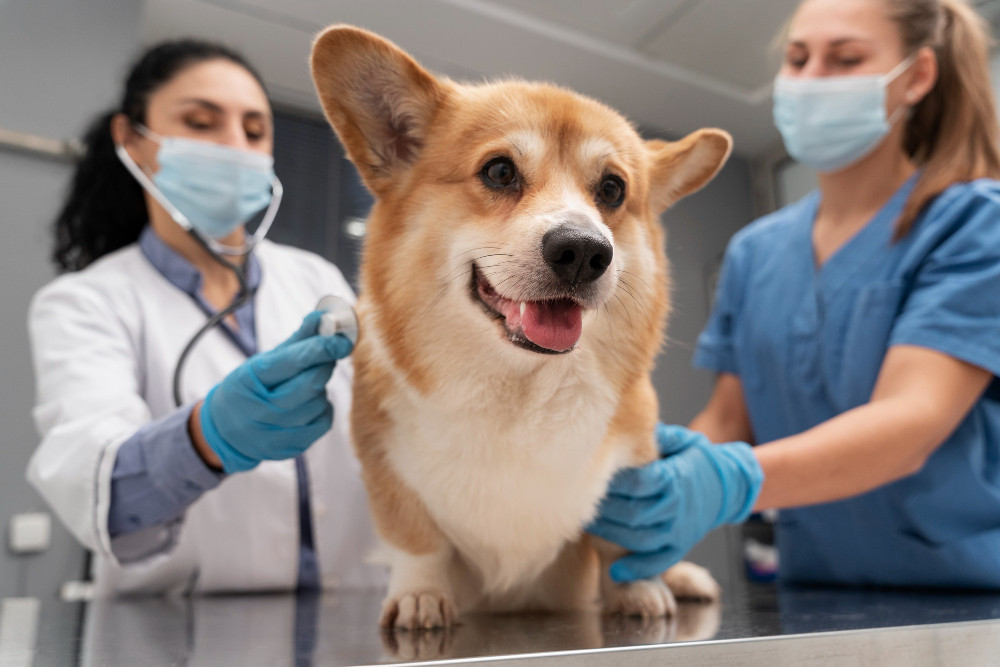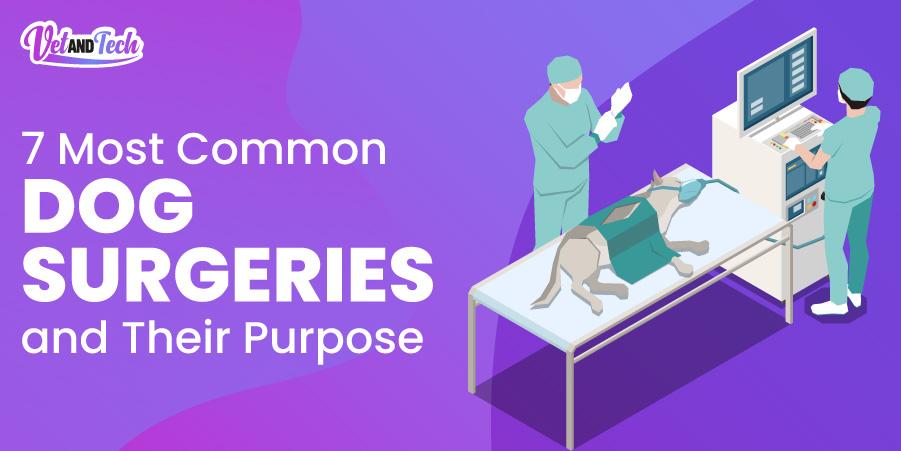7 Most Common Dog Surgeries and Their Purpose
Dogs are susceptible to several health problems that can be difficult to treat. Unhealthy dogs may also have serious behavioral issues, such as aggression towards people and other animals.
Such problems are treatable by ensuring the proper grooming environment for canines.
However, there are several canine diseases and health conditions where it becomes necessary to perform dog surgery.
In such a case, carrying out essential canine surgical procedures is important to save the lives of furry fellows.
Apart from that, it’s imperative to seek veterinary help immediately if your dog gets injured in any way. The untreated animal injuries can result in severe complications later on.
In this article, you’ll learn about the most common pet surgeries that can be necessary to perform to save a dog’s life.
Let’s begin with the list of vet procedures for canines!
List of Surgical Procedures for Dogs

Here’s the list of surgical procedures for canines.
- Spay (Ovariohysterectomy)
- Neuter (Castration or Orchidectomy)
- Dental Cleaning and Extractions
- Tumor Removal
- Cesarean Section (C-section)
- Orthopedic Surgeries
- Exploratory Laparotomy
- Bladder Stone Removal
- Entropion or Ectropion Repair
- Gastropexy
- Intestinal Blockage Removal
- Enucleation
- Anal Gland Removal
- Hernia Repair
- Ear Hematoma Repair
A dog may undergo one or more of these canine vet procedures once in life.
Major Types of Dog Surgeries
There are many types of canine surgical procedures to address various health issues in dogs.
However, on a broader level, there are two categories.
• Elective Dog Surgery
Elective surgery is the one you intend to have for treatment, improving your dog’s quality of life, or cosmetic reasons.
Another term to briefly describe it is “non-emergency surgery” that you can schedule in advance.
Many people will agree that saving a dog’s life is easier when they haven’t suffered too much already.
• Emergency Surgery
Emergency surgery is typically done to treat an urgent medical condition, such as a cut or bruise.
It’s great that veterinary practices now have the capability to handle the severe emergency cases effectively.
7 Common Vet Procedures for Dogs
.jpg&v=1684156691)
As we have enlisted above, there’re several pet surgeries for canines, but the 7 most common dog surgeries are as follows.
1. Arthroscopy
Arthroscopy is a surgical technique that includes both the diagnosis and the treatment of dogs’ joints. Veterinarians use this technique to repair dogs' displaced and fractured shoulder and knee joints.
In this dog surgery, the vet evaluates the condition of the impacted joint and recommends appropriate treatment accordingly.
The treatment requires post-operative care after surgery to avoid any complications.
In addition, administering appropriate medications to the pet following the surgical procedure can quicken and smoothen the healing process. Learn more about Dog Knee Surgery to understand the procedure and recovery in detail.
2. Nephrectomy
Nephrectomy is a surgical procedure for treating ureter and kidney conditions.
The treatment cures chronic infections, ureteral abnormalities, cancer, and many other conditions.
Initially, the veterinarians will diagnose the dog’s condition and plan the treatment accordingly.
After assessing the dog’s condition, they will recommend invasive dog surgery.
The recovery period is more important than the surgery itself.
First, veterinarians provide painkillers to dogs to prevent post-operative pain.
To fully recover, the patient will need to remain under observation and attend appointments.
3. Cystotomy
Cystotomy is a surgical procedure to create a wall opening in the urinary bladder of dogs.
In most cases, this procedure takes about 45 minutes. This time period includes preparing for the pet surgery, including anesthesia.
The typical duration of a cystostomy is 2 to 3 days.
However, it can vary depending on the dog’s health and the reason for the surgical procedure.
4. Caudectomy
Caudectomy is one of the most efficient dog surgeries to remove the screw tail, ingrown tail, and corkscrew tail.
The problem occurs because of the anatomical malformation that causes the curling of the tail. This happens in most dog breeds, including French Bulldogs, English Bulldogs, Pugs, and Boston Terriers.
Usually, surgeons do it within 3 to 5 days after the puppy’s birth. There is no post-operative care required for tail docking.
Besides that, it is critical to determine whether the organs are functioning properly.
A veterinarian may recommend an Elizabethan collar to prevent the dog from biting and licking its tail.
5. Bulla Osteotomy
There are many types of pet surgeries to treat ear issues, but bulla osteotomy is recommended to remove the infectious portion of the dog’s ear.
However, it can be critical to leave the infection untreated as its continual growth can make it more complicated.
Following the surgical procedure, the surgeon administers oral antibiotics, bandaging, and pain medication.
Additionally, veterinarians recommend the Elizabethan collar to protect the incision from injury or scratches.
6. Ear Tumor Removal
Tumors can grow abnormally in any part of a dogs' external, middle, or inner ear canal.
Primarily, there are two types of ear canal tumors, benign and malignant.
Non-cancerous tumors do not spread, while malignant tumors can spread to nearby tissues and other body parts.
Ceruminous gland adenomas and adenocarcinomas are the most common external ear canal tumors in dogs.
Chronic or long-term ear canal inflammation is the most common cause of ear tumors.
It can be hereditary or generic, but German Shepherds and Cocker Spaniels are at a higher risk of developing these tumors.
After properly examining the issue, the veterinarian will provide the proper treatment for removing the ear canal tumor.
The treatment depends on age, health condition, type, and tumor location. Identifying a Common Dog Tumor early on can significantly improve the treatment outcome and help guide appropriate care decisions.
7. Perineal Hernia Surgery
For dogs, veterinarians recommend perineal hernia surgery due to strained bowel movements.
In this condition, the dog has constipation, swelling in the anal region, and may experience appetite loss.
During this time, the dog will strain while urinating, the small intestine will become stuck in the hernial sac, and the blood supply will become irregular.
The vet will thoroughly diagnose the condition with rectal palpation. Following treatment, they recommend putting Metamucil in the pet's food to soften the stool so they can pass it easily.
Above all, pain relief medication is necessary to alleviate the patient's discomfort.
Aside from that, fitting the dog with an Elizabethan collar can easily help avoid incision licking.
Can Dogs Eat Before Surgery?

One of the most common questions pet owners may ask their veterinarian is, can dogs eat before surgery?
Well, In general, it is not recommended to feed dogs before undergoing surgery.
It’s wise to withhold food for a specific period prior to dog surgery, usually from midnight to before the procedure.
The reasons for not feeding the dog before vet procedures are as follows.
• Anesthesia Safety
When a dog under anesthesia vomits, the material can be inhaled into the lungs, causing severe respiratory issues.
Therefore, during anesthesia, an empty stomach reduces the likelihood of regurgitation and aspiration.
• Nausea and Vomiting
Anesthesia and surgical procedures can induce nausea and vomiting in dogs. An empty stomach helps minimize the chances of these complications.
• Digestive Function
Digesting food requires the secretion of digestive enzymes and the movement of the gastrointestinal tract.
In this regard, the dog's digestive system must be inactive during surgery to facilitate a smoother procedure.
• Postoperative Recovery
The dog's body needs time to adjust and heal without the added burden of digesting food.
So feeding a dog immediately after surgery can delay the recovery process.
Following your veterinarian's specific instructions regarding fasting before surgery is essential.
However, it’s important to ensure your dog has access to fresh water until the recommended fasting period begins.
Wrapping Up!
From this guide, we conclude that the primary goal of any dog surgery is to cure the health issues that endanger their lives.
If you want more information on pet surgeries, visit our vet resources page and explore surgical procedures.
We provide viable vet resources on pet complications like common pet diseases, breeds that fall prey to these diseases, their prevention, and how to treat them.
Vet and Tech, the source for free online veterinary education, is dedicated to providing well-researched and authentic data on various topics in veterinary medicine.
FAQs
What are Spay and Neuter pet surgeries?
Spaying or ovariohysterectomy is the removal of the ovaries and uterus in female dogs. This procedure is performed for preventing reproduction and certain reproductive diseases in female canines. While Neutering or Orchidectomy is the removal of the testicles in male dogs for the same purpose.
What kind of anesthesia do veterinarians use for dog surgeries?
Most veterinarians use general anesthesia, such as halothane and isoflurane, to make the dog unconscious and keep them from moving through the procedure.
Is there any risk involved during dog surgery?
Some vet procedures are complex and involve risks. In these situations, veterinarians must take the necessary precautions to avoid any inconvenience leading to significant complications.







